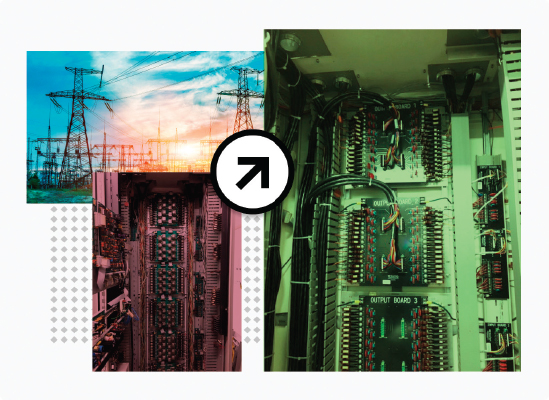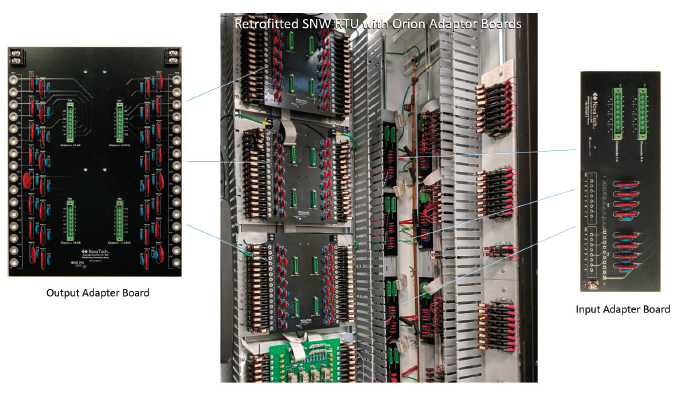By Bryan Gehringer, NovaTech
Support challenges associated with aging and obsolete remote terminal units (RTUs), combined with built-in cybersecurity and expanded functionality in modern RTU designs, are accelerating utility efforts to replace legacy hardware. The increasingly critical role of the substation RTU, notably in bulk and transmission substations, underscores the importance of ease of use, high performance, interoperability and scalability. The experience of a major U.S. utility in upgrading their legacy RTUs is described in this article.
“When we began to look at replacing our RTUs, our oldest terminals had been in use for more than twenty years,” reports an engineer at a major U.S. utility in the Southwest.
“Because of all that is involved in replacing our RTUs, we had been hesitant to initiate a search for a replacement system but when our vendor discontinued the type of platform that we utilize, we had to make a change and it became an opportunity to really consider our long-term needs.”

KEY IMPLEMENTATION CONSIDERATIONS
The utility initiated their RTU replacement search by issuing a request for information (RFI), followed by a request for proposal (RFP) to the top five vendors that most closely matched their requirements. “Ease of use” was heavily weighted.
For this utility, ease of use meant five things: 1) how easily the new RTUs could be configured to meet specific utility needs, 2) the ease of installation and integration with existing hardware and systems, 3) how easily field engineering and support staff could be trained, 4) quality of supporting documentation, and 5) how easily the system could be maintained.
“In a RTU replacement project, you are not just replacing terminals but impacting everything around it too,” says the engineer. “It’s the RTU, the chassis components, the power supply, the I/O and the cabling. You have to know all of it and so there’s a lot of training that is required with a project of this scope.”
As a result, ease of use and training were key factors in overall vendor selection. Because of the complexity of the legacy platform (due to the number of connections, amount of hardware, as well as software and logic-building nuances), the utility was concerned it would require extensive training for any new engineer or designer. They did not want to risk having team members unprepared because they were overwhelmed by a new system.
“Historically, it can take a new technician or engineer two to three years to truly learn a platform well enough to go out on site on their own,” says the engineer. “Since we have a six-month rotational engineering program, we really needed the ability to effectively and quickly train our team in RTU set up and configuration with all the necessary documentation and customer support to be successful going forward.”
Because this utility has a large RTU fleet, ease of maintenance, particularly for its software and firmware, was also rated highly. “Live firmware updates, security patches for new vulnerabilities and feature upgrades to a live system are extremely important, but these can be cumbersome to execute,” says the engineer. As a result, the utility reviewed each vendor’s firmware history as part of their RTU evaluation process to gauge what they could expect in the future.
Form factor also played a role in assessing overall ease of use. Older substations may not have been built with the capacity to expand in the future. Older legacy RTUs are also heavily hardwired, sometimes requiring a half to a full day in cutover time.
“Everybody is trying to look for a form factor that is similar to what they already have,” says the engineer, “The reality is that what you are switching over to will likely not need as much wiring as your legacy RTUs. What is desirable is to be as plug-and-play as possible so you can reduce the amount of cutover time to the new RTUs. Our goal was to get operations back up and running as soon as possible.”

SELECTION OF A REPLACEMENT RTU SYSTEM
From the five vendors participating in the RFP and evaluation process, the utility chose the NovaTech OrionLX automation platform for the RTU and HMI replacement portion of the RFP. NovaTech is a leading provider of substation automation solutions for new and retrofit installations.
Prior to the upgrade, the utility legacy configuration included a customized HMI in every transmission and distribution substation. While the Alarm pages made it easy for technicians to identify events in real time, the annunciator graphics program was cumbersome to edit, and to build new pages. Furthermore, the legacy HMI used a database separate from the RTU database, increasing overall configuration efforts. A better design was needed.
“One of the features that we like about the OrionLX RTU is the ability to build a page in minutes and then test and get the page working extremely quickly—usually within an hour,” says the engineer. “Even our most experienced engineers were pretty impressed.”
Configuration of the NovaTech OrionLX-based RTU—including the I/O system, the alarm tile annunciator, math and logic routines, and IED data access—is accomplished through NovaTech Configuration Director (NCD), a license-free tool used for Orion models. NCD eliminates most configuration efforts by providing pre-configured pick lists for over 250 commonly applied intelligent electronic devices (IEDs).
The utility need for future operability and scalability are also addressed by the Orion platform, which is offered in a range of models for pole top applications, distribution substation applications and transmission substation applications. All models are provided with identical firmware and configured with the same NCD tool. Moving to a larger or smaller platform is a matter of transferring the configuration and editing a few hardware-specific parameters. In addition, new protocols (e.g., IEC 61850, ICCP, etc.) and software options (email, IEC 61131, etc.) are modular, and can be added easily, in many instances, without requiring a firmware upgrade.
GETTING IT RIGHT
The challenging tasks of keeping the data flowing reliably between the RTU system and the utility enterprise is now complicated with aging and obsolete infrastructure. The engineer concludes, “Planning for our future power needs through the replacement of legacy RTU systems in our utilities enables us to continue to play our part.”
FOR MORE INFORMATION
Bryan Gehringer is senior application engineer at NovaTech. At NovaTech Automation, we make it easier for electric utilities and process manufacturers to keep the lights on and food, fuels, and other daily essentials flowing. Our technologies and engineering expertise help them simplify tasks, reduce risk, and increase return on assets as their businesses—and the planet—evolve. For more information, call 913.451.1880 or visit www.novatechautomation.com.
MODERN PUMPING TODAY, December 2021
Did you enjoy this article?
Subscribe to the FREE Digital Edition of Modern Pumping Today Magazine!



